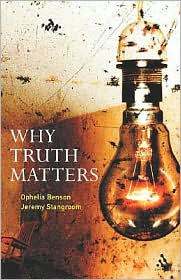by Dave Maier
In the wake of the 9/11 attacks we heard a great deal about the end of moral relativism, the point being that from now on we would all agree that some things are Just Wrong (and since to say so is Just True to boot, this means the end of irony, skepticism, and so forth as well). At the time conservatives were the ones to expound this point most enthusiastically, claiming that the events themselves refuted trendy liberal doctrines of multiculturalism and pluralistic tolerance of difference. Instead, they said, we must simply acknowledge what we all know to be true, such as [… well, actually, for some reason it remains unclear what should go in here, and this is our subject today].
Of course it was not only the political right who was pouring scorn on facile cultural relativism back then. Alan Sokal, of Sokal Hoax fame, had made much the same argument several years earlier. His target too was the political left, but as he reminded us repeatedly, he was himself a proud leftist, having taught mathematics for the Sandinistas in Nicaragua. What provoked his stunt, he told us, was that he was upset that what he had taken to be the left's characteristic commitment to, as they like to say, speaking truth to power, was dissolving into a puddle of wishy-washy jargon-ridden postmodern relatvism which scorned the very ideas of truth and rationality as imperialist dogma.
 This was all confusing enough as it was. A new wrinkle was added a few years later, when the events leading up to and during the 2003 Iraq war suggested to some that the right wing had its own problem with postmodernism in the ranks, or something at least very similar in its cavalier attitude toward truth and reality. Progressives pounced; and much real and virtual ink was spilled anointing the left as “the reality-based community,” as opposed to the “right-wing postmodernism” in the White House, as well as to creationism, climate change denial, religion itself, and whatever else seemed to fit the bill. Philosophers have not missed this opportunity to prove their relevance to contemporary debate by writing books with the word “truth” (or “true” or “knowledge”) in their titles, and in today's column I will discuss a few of the problems we run into when trying to make sense of these things, especially (paradoxically) when the target is such seemingly low-hanging fruit as postmodern gibberish.
This was all confusing enough as it was. A new wrinkle was added a few years later, when the events leading up to and during the 2003 Iraq war suggested to some that the right wing had its own problem with postmodernism in the ranks, or something at least very similar in its cavalier attitude toward truth and reality. Progressives pounced; and much real and virtual ink was spilled anointing the left as “the reality-based community,” as opposed to the “right-wing postmodernism” in the White House, as well as to creationism, climate change denial, religion itself, and whatever else seemed to fit the bill. Philosophers have not missed this opportunity to prove their relevance to contemporary debate by writing books with the word “truth” (or “true” or “knowledge”) in their titles, and in today's column I will discuss a few of the problems we run into when trying to make sense of these things, especially (paradoxically) when the target is such seemingly low-hanging fruit as postmodern gibberish.
In general I find myself ambivalent about these efforts. I do agree that (for example) most versions of creationism, such as “flood geology,” are so very insane as to justify our rejection of it as due to our own relatively firm basis in reality, and it is difficult to make sense of the idea that we need not be concerned about whether what we believe is in fact the case. However, that very difficulty infects as well our efforts to make sense of the apparently opposite view. The philosophical controversy about the nature of truth may lurk behind these political and cultural controversies, but they are not the same. While some misguided souls seem to be denying plain facts, it is not at all clear that they are denying the status, as “plain facts,” of those things they consider to be plain facts.
Read more »
Sharon Bertsch McGrayne introduces Bayes’s theorem in her new book with a remark by John Maynard Keynes: “When the facts change, I change my opinion. What do you do, sir?”
